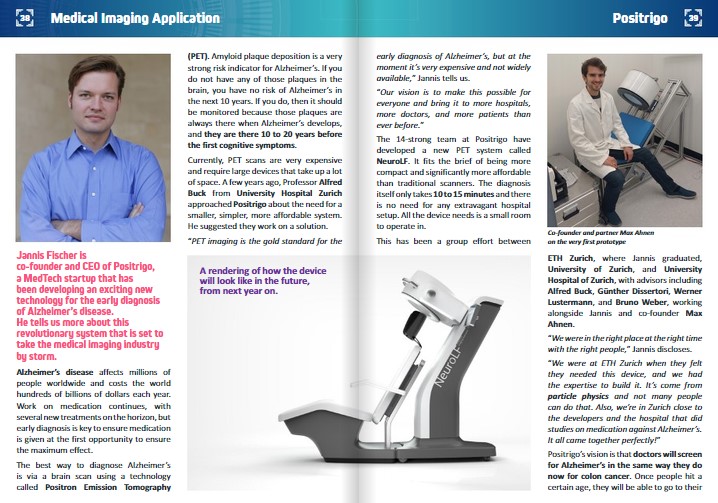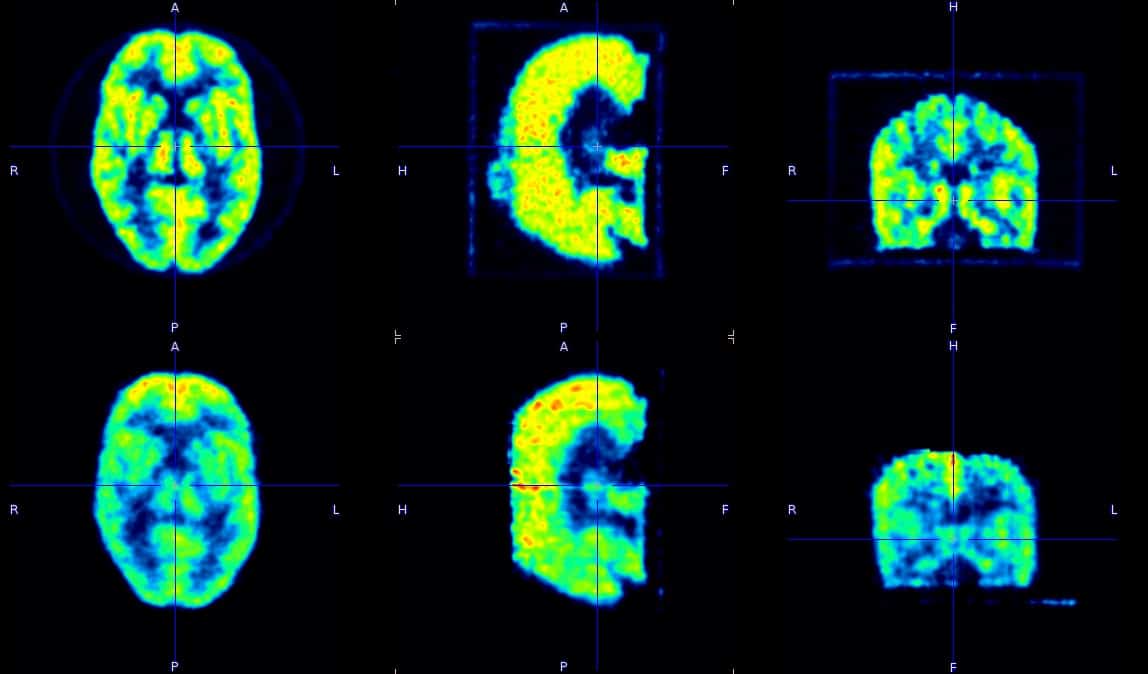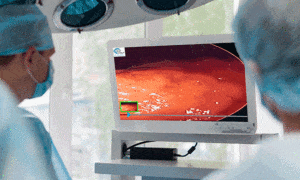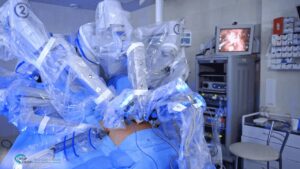This article was first published on Computer Vision News of December 2021
Jannis Fischer is co-founder and CEO of Positrigo, a MedTech startup that has been developing an exciting new technology for the early diagnosis of Alzheimer’s disease. He tells us more about this revolutionary system that is set to take the medical imaging industry by storm.
Alzheimer’s disease affects millions of people worldwide and costs the world hundreds of billions of dollars each year. Work on medication continues, with several new treatments on the horizon, but early diagnosis is key to ensure medication is given at the first opportunity to ensure the maximum effect. The best way to diagnose Alzheimer’s is via a brain scan using a technology called Positron Emission Tomography (PET). Amyloid plaque deposition is a very strong risk indicator for Alzheimer’s. If you do not have any of those plaques in the brain, you have no risk of Alzheimer’s in the next 10 years. If you do, then it should be monitored because those plaques are always there when Alzheimer’s develops, and they are there 10 to 20 years before the first cognitive symptoms.
Currently, PET scans are very expensive and require large devices that take up a lot of space. A few years ago, Professor Alfred Buck from University Hospital Zurich approached Positrigo about the need for a smaller, simpler, more affordable system. He suggested they work on a solution.
“PET imaging is the gold standard for the early diagnosis of Alzheimer’s, but at the moment it’s very expensive and not widely available,” Jannis tells us.
“Our vision is to make this possible for everyone and bring it to more hospitals, more doctors, and more patients than ever before.”
The 14-strong team at Positrigo have developed a new PET system called NeuroLF. It fits the brief of being more compact and significantly more affordable than traditional scanners. The diagnosis itself only takes 10 to 15 minutes and there is no need for any extravagant hospital setup. All the device needs is a small room to operate in.
This has been a group effort between ETH Zurich, where Jannis graduated, University of Zurich, and University Hospital of Zurich, with advisors including Alfred Buck, Günther Dissertori, Werner Lustermann, and Bruno Weber, working alongside Jannis and co-founder Max Ahnen.
“We were in the right place at the right time with the right people,” Jannis discloses.
“We were at ETH Zurich when they felt they needed this device, and we had the expertise to build it. It’s come from particle physics and not many people can do that. Also, we’re in Zurich close to the developers and the hospital that did studies on medication against Alzheimer’s. It all came together perfectly!”
Positrigo’s vision is that doctors will screen for Alzheimer’s in the same way they do now for colon cancer. Once people hit a certain age, they will be able to go to their doctor for a regular scan, with the outcome being that they either do not have to worry about Alzheimer’s for the next five to 10 years, or that they need closer monitoring, and perhaps medication.
The only other alternatives to this are blood tests, which are not very precise, or cerebrospinal fluid, where they tap into the spinal cord and take out some of the liquid, which can be very unpleasant and invasive.
“As we are in the pandemic, I think a good analogy is that the blood test is like the antigen test for Alzheimer’s and PET imaging is the gold standard PCR,” Jannis explains.
“There will be a lot of blood tests, but then we’ll always have people that need confirmation of blood test results, and this is where imaging comes in.”
With NeuroLF, people will have an intravenous injection with a small dose of radioactive tracer. The radiation dose is no higher than is needed for current systems, which is already no more than someone would be exposed to on a transatlantic flight. The brain scan can also identify other brain-degenerative diseases, such as Parkinson’s and ALS, to get an individual assessment of someone’s risk of brain function decline.
“Early diagnosis is vital because if you’re too late, it’s harder to treat,” Jannis points out.
“This is a game changer for an ageing society because it makes it possible to diagnose early and intervene early. There are hundreds of medications in different phases of clinical trials.”
He is confident there is now a clear path to market. Positrigo has worked closely with clinicians and engineers to validate the technology and aims to make it available in the next one to two years. It is entering a new series B funding round next year to support roll out into its first markets in Germany, Switzerland, and the US. The hope is that in a decade’s time it will be widely available for everyone at the point of care.
Positrigo doesn’t intend to stop here. This hardware is at the core of a software platform it is developing, and with the images it gets it is devising new models with AI-driven data science to help doctors make better diagnoses.
“Compared to current software, this will have an improved user experience and usability,” Jannis reveals.
“If you make it nice and easy to use, that’s also part of the road to making this exam more accessible and available.”
Positrigo is hiring! Visit its website for current openings and look out for new software engineer positions next year. If you have other engineering disciplines, keep an eye on their page for future roles.
Keep reading the Medical Imaging News section of our magazine.
Read about RSIP Vision’s R&D work on the medical applications of AI.




